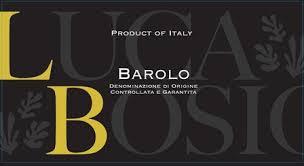Reviews of the recently released wines from the Luca Bosio Vineyards
By Lou Marmon
Gazette Newspapers March 25, 2015

Like the elusive truffle, the best examples of these wines are pricey, with many costing hundreds of dollars. They are also very tannic when young, with a harshness that requires years of cellaring to mellow before becoming truly drinkable.
But for winelovers with patience and disposable income, Barolo and Barbaresco grown in their namesake regions evoke the same level of praise as the finest Burgundies and Bordeaux although based upon a uniquely different flavor profile. Nebbiolo is notable for its intense floral-like aromatics and a difficult to describe, but still characteristic, aroma that seems part earthy and part savory with some tobacco and bitter fruit mixed in as well. The flavor profile includes fruits like blackberry, plum, cherry, strawberry and currant, along with some spice, high acidity and massive tannins while young.
For those who are intrigued but lack the finances and forbearance to purchase Nebbiolo wines from the more famous Barolo and Barbaresco producers, there are more reasonably priced alternatives. Recent releases of Barolo and Barbaresco from the Luca Bosio Vineyards are drinking remarkably well while young including the Luca Bosio Barbaresco DOCG 2011 that displays red floral, menthol and earthy aromas leading into attractive spice, coffee and chocolate accented dark berry, plum and strawberry flavors. Nicely balanced and very food friendly, there is also a notable minerality in the long finish.
Since no two growing seasons are ever identical, it is always fascinating to observe the impact of this variation in vintages. The Luca Bosio Barolo DOCG 2009 seems to explode with scents of cranberry, leather and hints of smoky tea that combine with mushroom, kirsch, cola and dark fruit flavors within a full bodied frame of notable but not massive tannins, good balance and oak that make it drinkable and yet also age-worthy in the short-term. Despite being a year younger, the Luca Bosio Barolo DOCG 2010 is actually drinking better right now. It is softer with velvety tannins and nicely developed red berry and floral aromas along with herb infused blackberry, raspberry and citrus notes leading to a lengthy, bright finish.
Bosio also produces some other interesting wines such as their 100 percent Barbera named after one of the family’s favorite dogs that is adept at finding truffles. Their “Leda, the Truffle Hunter” Barbera d’Asti DOCG 2013 is a value priced, easy drinking, medium-bodied wine that expresses ripe red berry and cranberry aromas and flavors along with citrus and some bittersweet chocolate at the end. Consider as well the Luca Bosio Arneis DOCG 2013, a lovely and inexpensive white from grapes indigenous to Piedmont that matches well with chicken, fish and light pasta dishes. It opens with lemon curd and white flower aromas that progress into lush pear, apricot and peach flavors with hints of hay and citrus acidity for balance.
There are two vintages of the Luca Bosio Moscato d’Asti DOCG currently available including the 2012, which has creamy apricot, melon and honey-orange flavors, and their 2013, which is brighter and a bit more exotic with some traces of spice and almonds intermingled within its apple, candied orange and honey flavors. They also make a mildly sparkling blend of 90 percent Moscato and 10 percent Brachetto that would be a terrific accompaniment to summer desserts. Called Mochetto, it features strawberry and stone fruit aromas and flavors along with some grapefruit throughout the pleasant finish.
